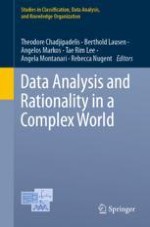This volume presents the latest advances in statistics and data science, including theoretical, methodological and computational developments and practical applications related to classification and clustering, data gathering, exploratory and multivariate data analysis, statistical modeling, and knowledge discovery and seeking. It includes contributions on analyzing and interpreting large, complex and aggregated datasets, and highlights numerous applications in economics, finance, computer science, political science and education. It gathers a selection of peer-reviewed contributions presented at the 16th Conference of the International Federation of Classification Societies (IFCS 2019), which was organized by the Greek Society of Data Analysis and held in Thessaloniki, Greece, on August 26-29, 2019.
